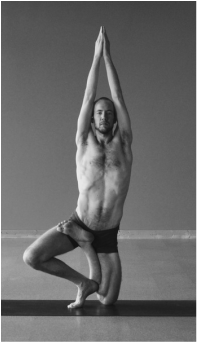|
This entry continues the discussion of the elements of yoga in the light of the overall goal: to see things as they truly are. For more discussion of this goal, read Part 1: Introduction. You can also read Part 2: Physical Postures/Asana. In the way that Physical Postures/Asanas use the body as a tool to change our perception, Energy Control/Pranayama uses the breath as a tool to go deeper.
The breath is more subtle than the muscles and bones. It can be controlled consciously but is also part of the autonomic nervous system, the largely unconscious part of the brain that controls things like respiratory rate and heart rate. It is this cross-over trait - that the breath is both conscious and unconscious - that gives it such transformative power. Simply put, Pranayama is breath control. We lengthen the breath, hold it in, hold it out. These conscious exercises bring us into contact with with our unconscious mind. We begin to observe and eventually even control the autonomic nervous system. This requires an incredibly still conscious mind, and this stillness is the purpose of Pranayama. Pranayama takes us much deeper than Asana. It stills the mind and directly accesses the nervous system. We begin to realize how much of our perceptions are affected and "colored" by the conscious and subconscious mind. As we proceed to quiet the mind at all levels, this coloring diminishes and we see ourselves and the world around us as they truly are. Our distortions are minimized. As we continue inward, we begin to use the mind exclusively, no longer using physical tools like the body (Asana) and breath (Pranayama). Concentration and Meditation require a very still and controlled mind. We will discuss that next. The Purpose of Yoga, Part 1: Introduction The Purpose of Yoga, Part 2: Physical Postures/Asana
0 Comments
Leave a Reply. |
This journal honors my ongoing experience with the practice, study and teaching of yoga.
My FavoritesPopular Posts1) Sridaiva Yoga: Good Intention But Imbalanced
2) Understanding Chair Posture 2) Why I Don't Use Sanskrit or Say Namaste 3) The Meaningless Drudgery of Physical Yoga 5) Beyond Bikram: Why This Is a Great Time For Ghosh Yoga Categories
All
Archives
November 2017
|


 RSS Feed
RSS Feed